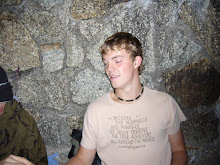

I have explored lighting before. I remember in the original 1960 Psycho film by Alfred Hitchcock the infamous shower scene where the mother figure is just a silhouette adds to the mystery of the murderer and fear factor of the film. The scene at the end when the girl turns the old women round to reveal a skeleton. The light bulb is hit and the light around the room moves quickly and randomly over the contours of the skeleton in the eye sockets and cracks. It indicates panic and horror and is a perfect climax to the suspense at the beginning of the scene.
The 1949 film The third man,a british example of film noir directed by carol reed is a black and white film. The lighting plays a essential role. In the underground canal scenes the lighting is very dark with shadows and silhouettes which makes the audience feel nervous and excited because they can't see exactly what is going on. The romantic scenes in most film noir films will always have a soft light directly on the female actors face to emphasize her beauty and facial expressions so that the audience are drawn in and captured in the moment.
Complete darkness also draws an audience in as they are likely to look closer into the screen. this technique is often used when trying to startle or surprise the audience.

1 comment:
Some good comments about lighting there. Keep an eye out for good, and bad, uses of lighting in animation and live action.
Post a Comment